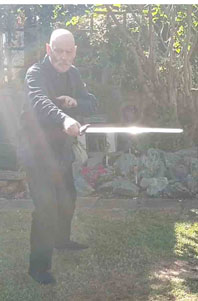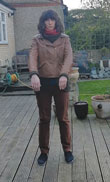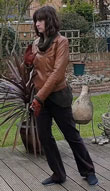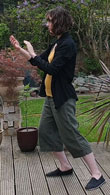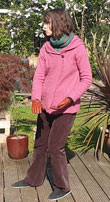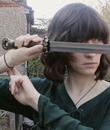| To read this email in your web browser click here |
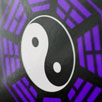 |
 |
 |
|
 |
Spring 2023 | ||
 -is-about-to-go-backwards.jpg) 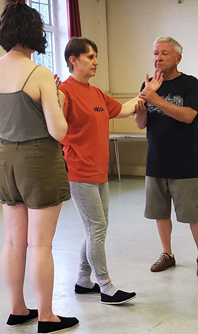 |
Avoiding the Party-trick Trap
john@bonsaitaichi.eu Telephone 07967 666 794 |
||
It doesn't matter whether your tai chi form went well or badly, the important thing is that you did it. T. T. Liang said: " If you rely too much on books, better to not have books. If you rely too much on teachers, better to not have a teacher. ." * Remember: a teacher can only point the way. (* T'ai Chi Ch'uan for Health and Self Defence T T Liang, Vintage Books.) Read the latest edition of Tai Chi Chuan & Internal Arts 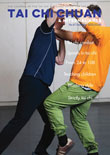 Click the pic |
Testing-testing The problem with testing the form structure is, perhaps, that we can find ourselves fascinated by the 'party tricks'. Pushing a partner without touching, sinking a partner with a light touch. The effortless moving of a partner much bigger than ourselves. All important parts of tai chi but, in the end, just tricks that anyone can learn in isolation. The problem with focusing too much on this aspect is that you are in danger of turning your whole practice into a hollow 'trick'.
Tai chi 'works' in all its aspects by developing complete
co-ordination. We talk about mind body and spirit working as one. A
phrase much quoted in my early days as a tai chi student. Little
understood, then, I feel, now that I have few years behind me. Then there are the 'martial artists' the 'physicalists' lets call them. They will knock you about doing partner work at a class. It feels like working with a brick outhouse. All this softness will never work for them, it is all about winning, never mind how. Don't offer to push-hands with these guys unless you want to get hurt. The real secret of effective tai chi lies in the form. It doesn't matter which form or style you practise; the movements are designed to co-ordinate you from top to bottom, inside and out. You do, however need two things: practise and to learn the principles behind the moves. Softness is a really powerful tool. Get this and you will be able to move like lightning if you need to, yet still remain rooted, so stable. But to make softness work you need to learn to be relaxed and that in itself can be a big learning curve. However, once you learn to put these two principles together you are starting to become co-ordinated in the way tai chi requires. Which brings me to the, often controversial, topic of chi. This is what the metaphysical practitioners are trying to play with. The 'magic' they see their master display. Now I am not going to try to explain what chi is, and, no, I am not withholding the secret of tai chi. The basic translation of chi is 'breath' which may give us a clue. It is not something that I can claim to understand. Indeed there are many people who claim that the concept is complete rubbish. It can't exist, it can't flow though channels in the body, we can't detect it and we have no means of measuring it. As for projecting chi and using it to push people – utterly impossible. It does happen and there are various theories to explain the phenomenon ranging from 'fix! the two people are collaborating', to other people explaining it away as a 'form of hypnotism'. So what are we talking about? When I was first learning my master always said that chi was your life force. Without it you would be dead. That is the best explanation I can give except to say that our practice serves to co-ordinate everything about us – mind body and spirit, or let us say, life force. We talk a lot about chi kung (qigong). It means energy work and as much as it is often taught as a separate discipline to tai chi, tai chi is also qigong. There are many different forms of qigong: we practice zhang zhuan, a standing form intended to develop internal power. Most forms of qigong, including tai chi, involve movement and it is this that will move your energy through your body. It is an important feature for health, something that features in Traditional Chinese Medicine (TCM). Many TCM treatments, such as acupuncture, are intended to unblock energy in specific parts of the body. Not something the party tricks will do. In my early days learning tai chi we had a student in our class who was heard to say: “We work on this stuff but you never bother with it when you do the form.” At the time I thought that he had rather missed the point. 'Bothering with it' is exactly what you should be doing when you do the form. Integrating the things that make the party tricks work is really the whole point. Get this and you will make your tai chi the holistic system it can be. There is research around today that shows us what tai chi can do for you in terms of wellbeing, improved general health and even, done properly, as a self defence system. So what we should be doing is to test the structure of the static positions, test the movements but with a partner. Then practise the same things without a partner. To make sure you get it right start with the position before, then work through the thing you want to test into the following position. Do all of this slowly. Then work on the form, again slowly, focusing on each move to make sure that you 'tick all of the boxes': relax, sink, root, turn, move and root again in that order. Focus on the move, but also focus ahead looking at the furthest point away from you. When the move is completed and you are in the next position,, again, make a final sink relax everything into your foot. And as you do all of that be heading, inside, in your mind, into the next move. For me, this is the secret of tai chi.
To read more tai chi essays click here |
||
